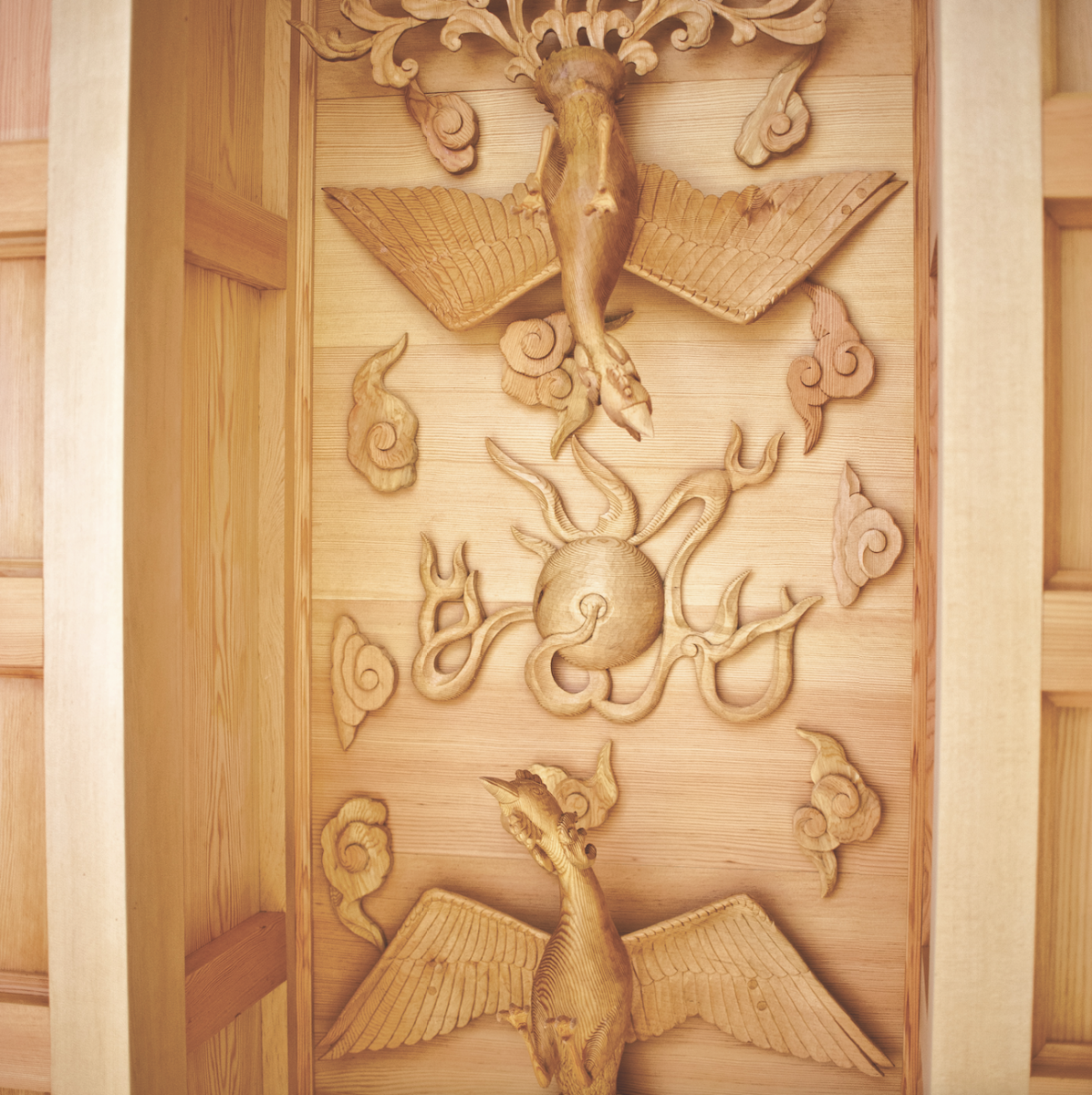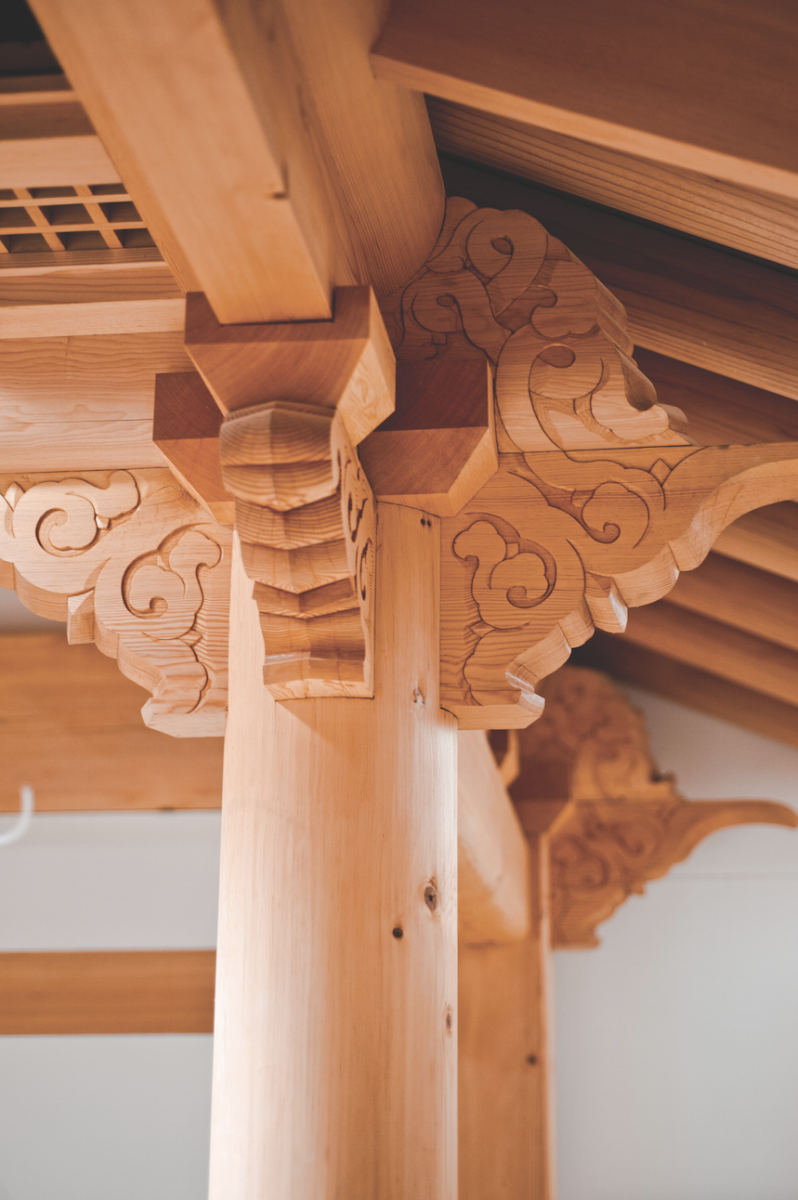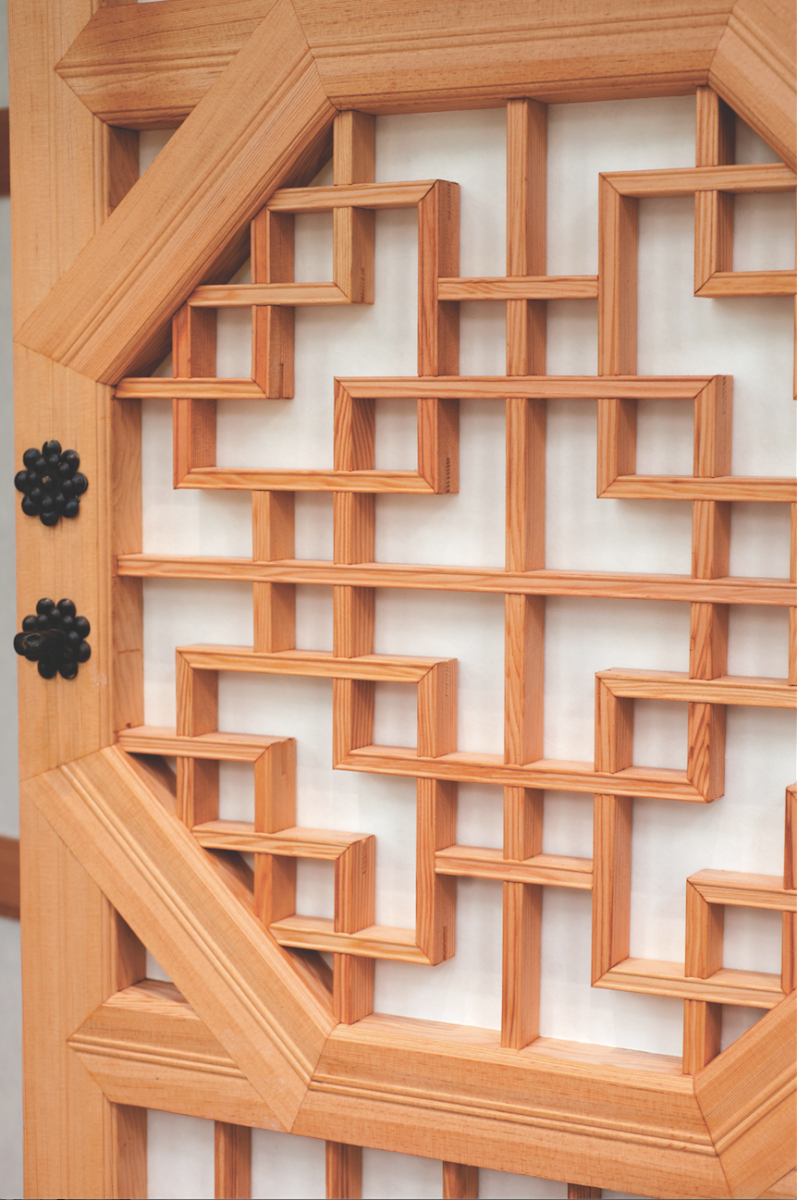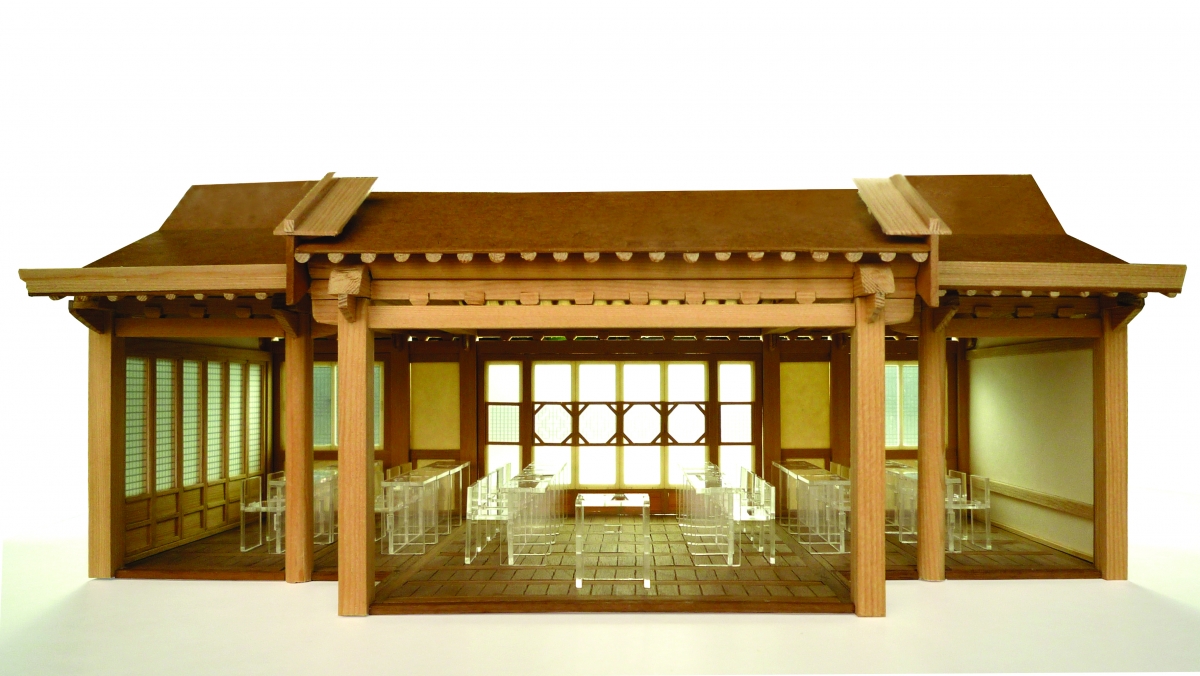Unveiling the Korean Heritage Classroom
PITTSBURGH—The University of Pittsburgh’s Korean Heritage Classroom will be unveiled to the public at a dedication ceremony concurrent with a Korean cultural festival on Nov. 15. The classroom is Pitt’s 30th Nationality Room and the first new room to open since 2012.
The dedication ceremony will be held at 2:30 p.m. in Pitt’s Heinz Memorial Chapel, Fifth and Bellefield avenues, Oakland. The cultural festival will follow at 3:30 p.m. in the Commons Room of the Cathedral of Learning, 4200 Fifth Ave., Oakland. Coordinated viewings of the Korean Heritage Classroom will be available to the public throughout the festival.
The ceremony will commence with the singing of the United States’ and the Republic of Korea’s national anthems. Speakers will include University of Pittsburgh  Chancellor Emeritus and the Chair of the University’s Institute of Politics Mark A. Nordenberg as well as Ahn Ho-Young, the national ambassador of the Republic of Korea to the United States, and E. Maxine Bruhns, director of Pitt’s Nationality Rooms and Intercultural Exchange Programs. Following formal remarks, the Korean Heritage Classroom Committee—a group of local Korean-American citizens who oversaw the classroom’s funding efforts—will present a specially made ceremonial key to Nordenberg. The key presentation symbolizes the committee gifting the classroom to the University of Pittsburgh.
Chancellor Emeritus and the Chair of the University’s Institute of Politics Mark A. Nordenberg as well as Ahn Ho-Young, the national ambassador of the Republic of Korea to the United States, and E. Maxine Bruhns, director of Pitt’s Nationality Rooms and Intercultural Exchange Programs. Following formal remarks, the Korean Heritage Classroom Committee—a group of local Korean-American citizens who oversaw the classroom’s funding efforts—will present a specially made ceremonial key to Nordenberg. The key presentation symbolizes the committee gifting the classroom to the University of Pittsburgh.
The cultural festival will feature performances by Korean-American talent as well as entertainers from abroad. Notable performers will include the Maryland-based Korean Performing Arts Academy of America, the Korean Pittsburgh Women’s Chorus, the Young Brothers Tae Kwon Do Academy, and the internationally acclaimed Korean Children’s Choir from South Korea. Authentic Korean food and crafts will be available, and Pitt’s Quo Vadis Guides—Nationality Room student tour guides with extensive knowledge of each room—will offer tours of the Korean Heritage Classroom to attendees.
“The Korean Heritage Classroom stands as a tribute to the culture and history of what are now North and South Korea,” said Bruhns, who has overseen the construction of 11 Nationality Rooms since becoming director in June 1965. “For nearly 90 years, the University of Pittsburgh’s Nationality and Heritage Classrooms have recognized the diverse group of cultures that came together to make Pittsburgh and the United States of America great places to live, learn, and work. We welcome our latest addition, celebrating both their history and our future together.”
The Korean Heritage Classroom’s design keeps with Pitt’s longstanding requirement that all Nationality Rooms represent a time period prior to 1787, the year of  the University’s founding and the signing of the U.S. Constitution. The design concept was inspired by the “Myeongnyundang,”—translated as “Hall of Enlightenment”—the main lecture hall of South Korea’s Sungkyunkwan University. Founded in 1398, Sungkyunkwan served as Korea’s “royal academy” and was the region’s foremost institution of higher education for nearly two centuries. Today, the lecture hall continues to be used for special ceremonial events and is recognized throughout Asia as a prominent historical monument.
the University’s founding and the signing of the U.S. Constitution. The design concept was inspired by the “Myeongnyundang,”—translated as “Hall of Enlightenment”—the main lecture hall of South Korea’s Sungkyunkwan University. Founded in 1398, Sungkyunkwan served as Korea’s “royal academy” and was the region’s foremost institution of higher education for nearly two centuries. Today, the lecture hall continues to be used for special ceremonial events and is recognized throughout Asia as a prominent historical monument.
Like the Hall of Enlightenment, the Korean Heritage Classroom depicts three connected rooms, with two oak columns forming a symbolic boundary. The center room is longer with a lofty ceiling. Sungkyunkwan officials used the center room for ceremonies, lectures, rituals, and other important public events. The two smaller adjoining rooms were used for faculty research and private meetings.
The ceiling of the central room is adorned with a pair of wooden phoenixes, inspired by the royal palace of the Joseon Dynasty. All windows are covered with a specially produced paper product made of mulberry tree fibers. Desks are made of hard oak and have seating for groups of two or three students. There are two doors: a front door that leads to the Cathedral of Learning’s third-floor corridor and a symbolic back door, for aesthetic purposes, that faces Heinz Memorial Chapel. In the Hall of Enlightenment, the back door would have led to the Sungkyunkwan’s courtyard.
The Korean Heritage Classroom will be the first of Pitt’s Nationality Rooms to be equipped with state-of-the-art technology. Devices include an 85-inch Samsung 3D monitor along with Wi-Fi connection and four centrally placed speakers. Such technology will be standard in the construction of future Nationality and Heritage Classrooms.
The Korean Heritage Classroom’s dedication is the culmination of more than eight years of work by Pitt administrators, citizens, donors, government officials, and  supporters in both the United States and South Korea. Following official approval by then-Chancellor Nordenberg in the fall of 2007, a seven-year international fundraising campaign raised more than $850,000 in donations.
supporters in both the United States and South Korea. Following official approval by then-Chancellor Nordenberg in the fall of 2007, a seven-year international fundraising campaign raised more than $850,000 in donations.
The classroom’s building materials were procured and crafted in various regions of South Korea and shipped to Pittsburgh during the spring of 2015. Throughout the summer, Korean artisans and craftsmen—who specialize in traditional Korean architecture—assembled the materials within room 304 of the Cathedral of Learning. Construction continued throughout the fall semester and was completed in late October.
Established in 1926 by then-Chancellor John Bowman, Pitt’s Nationality Rooms are representative of—and pay tribute to—the cultural groups that settled Allegheny County. The classrooms are located on the first and third floors of the Cathedral of Learning and are used as functioning classrooms. Pitt’s Nationality Rooms are maintained and supported through a partnership between the local populations of these cultural groups and the University of Pittsburgh.
###
11/2/15/amm/klf/jm

Media Resources
Schools of the Health Sciences Media Relations
For more information about Pitt's schools of dental medicine, health and rehabilitation sciences, medicine, nursing, pharmacy, and public health, click here >
To locate stories from health science schools prior to 2013, visit the UPMC news archives »
Urgent Question?
University of Pittsburgh news reps are available to answer urgent media inquiries. Outside of regular business hours (Mon-Fri, 8:30 a.m.-5 p.m.), please email us at media@pitt.edu.
News reps for University of Pittsburgh Health Sciences schools can be reached outside of regular business hours through the paging operator at 1+412-647-2345.


